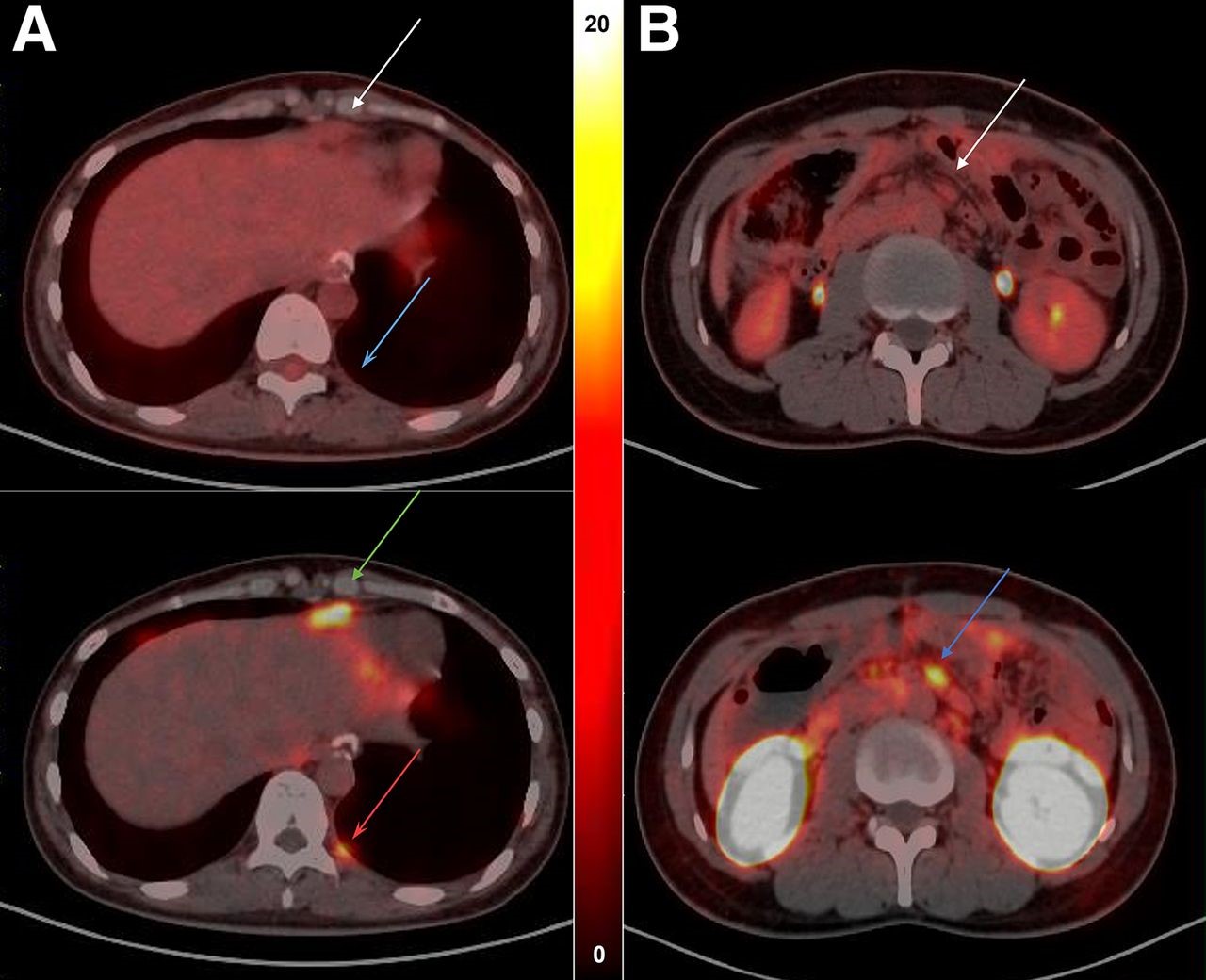New Radiotracer Enables Same-Day Imaging of Gastrointestinal Cancer Biomarker, Identifies Targeted Therapy Candidates
Images

A new PET radiotracer enables same-day imaging of the gastrointestinal cancer biomarker, Claudin18.2 (CLDN18.2). Uptake of the radiotracer, 68Ga-NC-BCH, correlates significantly with CLDN18.2 expression, a promising finding that could allow oncologists to optimize treatment for patients and monitor their response, according to research published in The Journal of Nuclear Medicine.
Gastrointestinal cancers are one of the most common types of cancer across the globe, accounting for more than a quarter of the total cancer incidence and more than one-third of cancer-related deaths each year. Early symptoms can be deceptive, and most gastrointestinal cancers are diagnosed at an advanced stage often leading to a poor prognosis and increased mortality.
The protein CLDN18.2 is highly expressed in gastrointestinal cancers and several forms of CDLN18.2-targeted therapies are currently undergoing clinical trials. There is no standard test for CLDN18.2, however, and most detection methods involve immunohistochemistry, an invasive process that covers only a small amount of tissue and does not reflect the heterogeneity of CLDN18.2 expression in tumors.
“The detection of CLDN18.2 expression levels is essential for identifying patients who can benefit from targeted therapies,” said Hua Zhu, PhD, professor at Peking University Cancer Hospital in Beijing, China. “In this study, we developed a CLDN18.2-targeting radiotracer and conducted whole-body PET imaging to determine its ability to detect the biomarker.”
Researchers first synthesized the radiotracer 68Ga-NC-BCH and performed preclinical evaluations on human gastrointestinal cancer cell lines and mouse models. Next, 11 patients underwent whole-body 68Ga-NC-BCH PET and 18F-FDG PET, and radiopharmaceutical biodistribution, radiation dosimetry, and the relationship between uptake and CLDN18.2 were evaluated.
68Ga-NC-BCH was stably prepared and demonstrated good radiochemical properties. The radiotracer exhibited rapid blood clearance, high affinity for CLDN18.2, and high specific uptake in CLDN18.2-positive cells and xenograft mouse models. In patients, 68Ga-NC-BCH displayed high uptake in the stomach and kidney and slight uptake in the pancreas. Compared with 18F-FDG, 68Ga-NC-BCH identified more lesions in the lymph nodes and peritoneum, the most common metastatic sites of advanced gastric cancer.
“68Ga-NC-BCH PET is a safe, noninvasive imaging method for detecting CLDN18.2 expression in
patients,” said Zhu. “The rapid uptake of the radiotracer allows patients to complete the whole imaging workflow within one day, greatly increasing compliance and reducing radiation exposure. This can greatly help oncologists in making treatment decisions.”